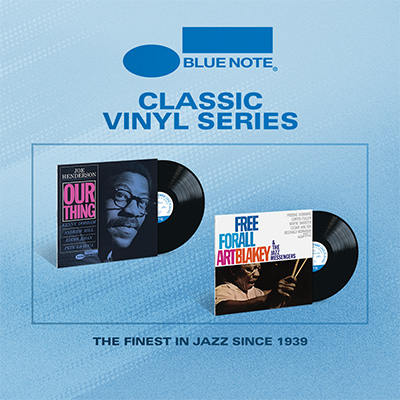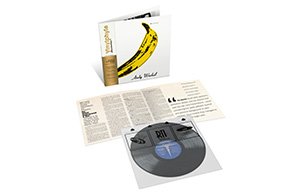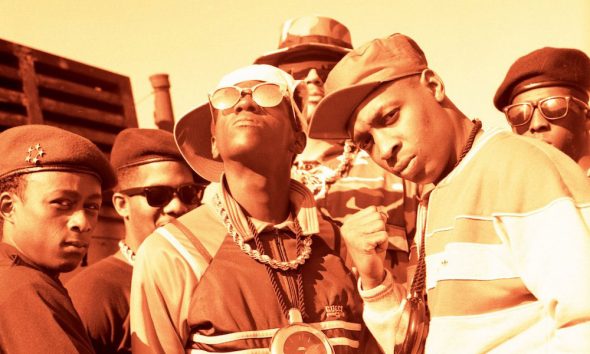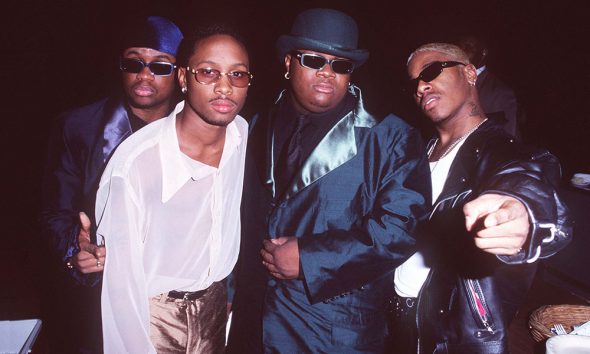Peggy Lee: The Life And Legacy Of A Pioneering Jazz Singer
Peggy Lee’s legacy continues to influence new generations of singers. “We can all learn from her,” says Lee scholar Dr. Tish Oney.
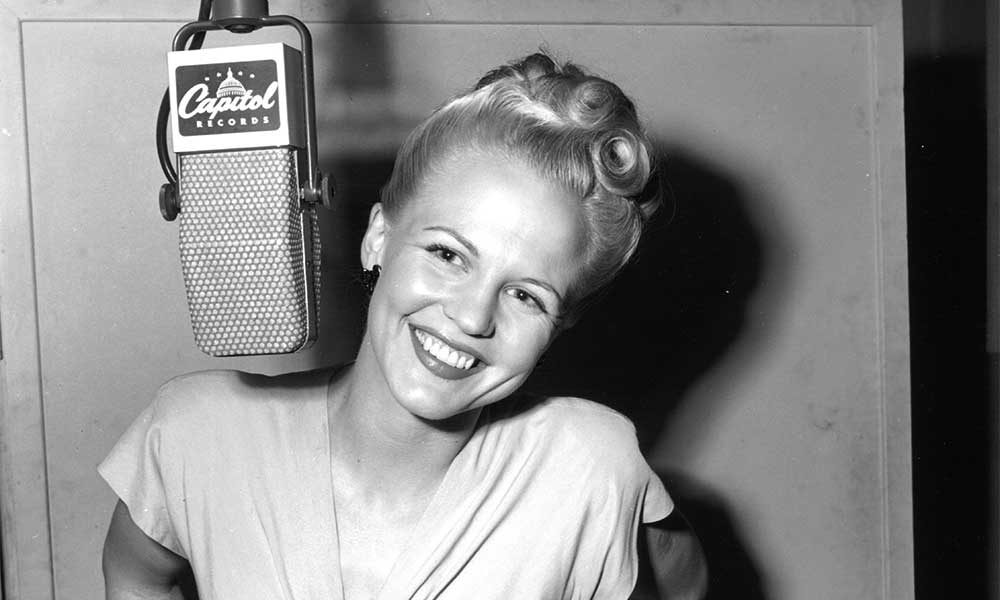
“Peggy Lee was a universal artist in many things,” states Dr. Tish Oney, author of an insightful new book on the singer, Peggy Lee: A Century Of Song. “She was a top-grade performer and recording artist, producer, bandleader, songwriter, arranger, voiceover artist, Academy Award-nominated actress, and a lyricist for many collaborative composers.” Dr. Oney also points out that the singer’s legacy also includes her active participation in helping musicians involved with film music get a fairer financial deal from movie companies. “She was an advocate for musicians’ rights later on,” reveals Oney. “So she was a pioneer in a whole lot of ways.”
Listen to the best Peggy Lee songs on Apple Music and Spotify.
“You have to change your name”
Though she became famous for her trademark sultry vocal style, Peggy Lee didn’t have the best of starts in life. Her mother died when she was four, and she was brought up by an abusive stepmother. But despite experiencing a challenging childhood, her love of music, combined with her innate singing talent, eventually gave her a passport to a new and better life.
Lee was born Norma Deloris Egstrom in rural North Dakota. She started singing with a local band when still in high school, which led to appearances on a sponsored radio program and eventually an audition at one of North Dakota’s biggest broadcasting stations, WDAY, in the town of Fargo, run by Ken Kennedy. “You have to change your name,” Kennedy told the 17-year-old aspiring singer. “Norma Egstrom doesn’t sound right. You look like a Peggy. Peggy Lynn. No – Peggy Lee,” the singer wrote in her 1989 autobiography, Miss Peggy Lee.
Reinventing herself as Peggy Lee, Egstrom had an opportunity to put her troubled past behind her and create a new persona as well as make a fresh start. After making a name for herself in Fargo, she moved to California in 1937, where she took a job as a waitress while trying to break into the music business. But a bout of tonsillitis took her back to North Dakota. When she recovered, she got a regular gig singing in a Fargo hotel, before taking to the road again.
First, Lee went west back to California and then east, over to Chicago. It was there that bandleader Benny Goodman saw her perform and hired her to take over from singer Helen Forrest, who was leaving his group. Lee underwent a baptism of fire with the so-called King Of Swing. She was expected to perform with the band without any prior rehearsal (luckily, she already knew Goodman’s repertoire) and, two days after joining, was taken into a Chicago studio to make her recording debut. Though she was thrown in the deep end, Lee survived and went on to front a swathe of hit singles with Goodman, including “Somebody Else Is Taking My Place” and “Why Don’t You Do Right.”
“She had an amazing natural technique”
At this point in her career, Lee hadn’t adopted the low, sultry vocal tone that defined her later solo work. “She had an amazing natural vocal technique early in her career,” explains Oney, analyzing the singer’s early pre-solo sides. “In her big-band years with Benny Goodman, Peggy could match the timbre and the quality of a lot of different singers who had canary-like, higher-pitched voices. You can hear a very natural, beautiful mix in her voice before she started to sing down low. She really proved in those early recordings that she had the technique to sing any number of different styles extremely well.”
It was after she left Goodman, in 1943, that Lee signed with Capitol Records. The demise of big bands at the end of World War II, mostly due to economic factors, helped Lee’s rise to prominence. She started recording with smaller ensembles, which allowed her to adopt a more expressive way of singing that aided storytelling and conveyed intimacy.
“Nobody has eclipsed her”
At Capitol, Lee racked up a welter of hits, including the chart-topping “Mañana (Is Soon Enough For Me),” before moving to Decca in 1952 for a five-year spell that yielded her most celebrated album, Black Coffee. In 1957, she returned to Capitol for a second, much longer stint, that took her up to 1972. “She was the longest-running Capitol-signed female artist, with her consecutive 22-year contract,” reveals Oney, highlighting Lee’s long run at the Hollywood record label. “Nobody has eclipsed that.”
Lee made over 40 albums for Capitol and during that time dabbled with different genres, ranging from jazz, pop, Latin, and blues to rhythm’n’blues, cabaret songs, gospel numbers, and even soft rock. Lee herself didn’t recognize musical boundaries. She wrote in her autobiography: “I didn’t intend to be a jazz singer, and even now I don’t know what kind of singer I am, but Louis Armstrong said I always knew how to swing.”
According to Oney, Lee’s eclecticism stemmed from a desire to stay current. “She was interested in remaining relevant while musical tastes changed She wanted her former fans to continue to love her, of course, but also wanted to explore new music and to gain young fans as she aged. She respected current songwriters in whatever decade she was in, so she strove to record very new music even until her old age.”
Lee’s willingness to experiment with different musical styles underlined her propensity to take chances – something that many other singers weren’t willing to do. “She left us an example of an artist who wasn’t afraid to take chances and to explore music she hadn’t explored before,” explains Oney. “She was a risk-taker and did not stay in a safe place, musically, all the time.”
“An artist who wasn’t afraid to take chances”
Dr. Oney, whose new book on Lee is an exploration of her music rather than a standard biography, says the singer discovered a vocal niche that nobody else was occupying. “She had a conversational style,” Oney observes, “and it really suited her outstanding text-based improvisation, too, because then she was in her speaking range and could explore singing as a kind of speaking-on-pitch type of approach.”
Besides this, what other unique qualities did Lee have as a vocalist? “Peggy also had unmatched phrasing,” says Oney. “And a way of manipulating rhythm to suit how she wanted to say something, always placing the lyrics at the forefront of the attention and giving them the highest priority. She also mastered understated singing.”
Though some view Lee as a jazz singer, there are others – especially within the jazz community – that don’t. According to Dr. Oney: “Many people don’t recognize Peggy Lee as a jazz singer because she did so many things well and wasn’t confined only to jazz,” she states. “One of the reasons she has not been thought of as a jazz singer per se is because of her method of improvisation. It didn’t include scat singing, but I think that’s an oversight by the jazz community because Peggy’s text-based improvisation is every bit as difficult as Ella Fitzgerald’s and Sarah Vaughan’s scat-based improvisations are.”
“A very subtle improviser”
For those unfamiliar with the concept of text-based improvisation, Dr. Oney explains it in her book: “In text-based improvisation, the text is sung, but the singer changes notes and rhythms, departing in varying degrees from the melodic and rhythmic organization of the composer.” Lee, then, followed the example of her idol, Billie Holiday, who was one of the first jazz singers to explore text-based improvisation. Like Holiday, Lee would play around with a song’s melody, refashioning phrases and changing the timing and rhythmic emphasis in regard to how the lyrics were delivered. Because of this approach, Lee never sang a song the same way twice, which, in Oney’s opinion, denotes extemporization, the hallmark of all bona fide jazz musicians.
“She was a very subtle improviser,” Lee says. “You can tell it’s improvisation because if you listen to her other recordings, no song is ever the same. She didn’t plan her performances to mimic herself. Every time she sang “Fever,” she sang it a little bit differently.”
“‘Fever’ was a radical departure”
“Fever,” of course, was Lee’s chart-topping cover of R&B singer Little Willie John’s 1956 R&B hit and it became one of the singer’s signature songs. With its mix of flavors, it blurs genres. “It was an amalgamation of several different styles,” explains Oney. “It was pop music, but it was blues. And it was jazz, too. So it was very difficult to categorize.”
In terms of the song’s arrangement, “Fever” was novel for the time. “‘Fever’ definitely marked a departure from a lot of what she had done before,” reveals Oney. “It was pretty radical. She pared it down to just voice, bass and finger-snaps. She had a very clear idea of what she wanted, and so its simplicity and the minimalist approach made it universal. All the attention was on her voice, with its bluesy nuances and rhythmic phrasing that created a presentation that was uniquely hers.”
“She steered clear of imitation”
What has often been overlooked in evaluations of Lee’s career is her talent as a composer. She was a notable songwriter at a time when female tunesmiths were few and far between, but Lee had to battle to get her songs recorded. “She was discouraged from bringing in a lot of her own material,” says Oney. “They wanted to have her focus on the music that they wanted her to record, but she was a very prolific writer, composing over 270 songs.” Among them were the hits “Mañana (Is Soon Enough for Me)’, “What More Can A Woman Do’’ and “It’s A Good Day.’’ She also wrote lyrics for songs by Duke Ellington (“I’m Gonna Go Fishin’’), Victor Young (“Johnny Guitar’’), Sonny Burke (“He’s A Tramp’’), Cy Coleman (“That Was Then’’) and Johnny Mandel (“The Shining Sea’’).
Among Lee’s influences was blues singer Lil Green (who sang the original “Why Don’t You Do Right’’), but she was careful not to imitate others, seeking a sound that was uniquely hers. “She loved Ella Fitzgerald’s singing, but steered clear of any imitation of her,” says Tish Oney. “She greatly respected Billie Holiday and was often compared to Billie throughout her career, but denied aping her. She didn’t want to be viewed as someone who imitated her too closely, so she had to find her own way of expressing herself while paying homage to those who influenced her.”
“We can all learn from her”
Though 18 years have passed since Lee’s death, at the age of 81, in 2002, her timeless music continues to find an enthusiastic audience. “She’s extremely relevant in the sense that her phrasing, timing, pitch precision, elegance, performance practice, and her expression really could not be beaten,” says Dr. Oney. “Regardless of how long she’s been gone, we can all learn from her.”
The author of Peggy Lee: A Century Of Song also sees the singer as one of the 20th Century’s pre-eminent stylists and believes that Peggy Lee belongs in a small but elite group of vocalists that helped to shape popular music. “When you realize she made over 1,100 recordings, that’s approaching Frank Sinatra’s output,” says Oney. “Along with Bing Crosby and Louis Armstrong, she and Frank were the male and female tillers of 20th-century music.”
Dr. Tish Oney’s Peggy Lee: A Century Of Song, published by Rowman & Littlefield, is out now. Buy it here.
Looking for more? Discover the best Peggy Lee songs.

